University of Leicester
Type of resources
Topics
Keywords
Contact for the resource
Provided by
Years
Formats
Update frequencies
-
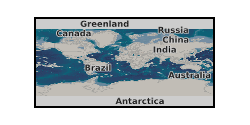
The data set consists of rock samples collected from Burnmouth, a core drilled at Norham, from Crumble Edge, Willie's Hole and Nova Scotia from 2012-2016; milled material is included. There is an Excel spreadsheet of sample numbers with location, sample height on log, lithology and fossil content. Scans of field logs from Burnmouth, Crumble Edge, Edington Mill, Pease Bay (UK) and locations in Nova Scotia, and overview drawn-up logs from Burnmouth, Norham, Crumble Edge and Willie's Hole are included. Scans of thin section scans are also included. There is a spreadsheet containing geochemistry data - sample numbers with lithology and %C, %S, d13C. These data were used to interpret the environment in which early tetrapods have been found in the early Carboniferous. Publications include: Bennett et al., 2016 (doi: 10.1111/sed.12280); Bennett et al., 2017 (http://dx.doi.org/10.1016/j.palaeo.2016.12.018 0031-0182); Clack et al., 2016, (DOI: 10.1038/s41559-016-0002); Kearsey et al., 2016 (http://dx.doi.org/10.1016/j.palaeo.2016.05.033) ; Clack et al., 2018, (doi:10.1017/S1755691018000087); Millward et al., 2018 (doi: 10.1111/sed.12465); Ross et al., 2018 (https://doi.org/10.1017/S1755691018000142)
-
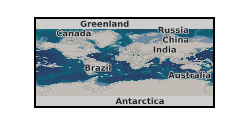
This study explored the links between host rock composition, hydrothermal fluid composition (particularly pH), and the resulting ore minerals and deposits. The progressive water–rock reaction between 1 kg of initially acidic, condensed magmatic vapour and a series of different rock compositions was modelled with CHILLER (Reed, 1982, Reed, 1998), and follows the design of the water-rock reactions of Reed (1997). The thermodynamic data used in the numerical experiments are from the database SOLTHERM.H08 (Reed and Palandri, 2013). Data and calculations within SOLTHERM include: equilibrium constants calculated with SUPCRT92 (Johnson et al., 1992); mineral thermodynamic data for silicates, oxides, hydroxides, carbonates, gases (Holland and Powell, 1998) and sulphides (Shock, 2007). Mineral solid solutions are represented by end-member compositions that are mixed using an ideal multisite mixing scheme. Rock compositions used in the modelling represent a sub-alkaline andesitic control, and a number of alkaline compositions associated with world-class Au deposits. All starting rock compositions are derived from whole rock geochemical data, and have been recalculated to a 100% basis without TiO2 or P2O5 (excluded as minor phases with little to no effect on hydrothermal mineral assemblages). Original total Fe (as Fe2O3) has been recalculated to FeO and Fe2O3 using the method of Müller et al. (2001). The andesite is representative of calc-alkaline, silica saturated compositions, and is derived from and discussed in detail in Reed (1997). The Luise “Phonolite” (a trachyandesite using the Le Maitre et al., 1989 TAS plot; Fig. 1) and Trachyandesite are from the vicinity of the Ladolam epithermal Au deposit, Lihir Island, Papua New Guinea (Müller et al., 2001). The Porgera Mugearite and Feldspar Porphyry represent unaltered host rock compositions (Richards, 1990) from the Porgera Au deposit (Papua New Guinea). The Cripple Creek Phonolite is part of the host suite to the Cripple Creek epithermal Au deposit, Colorado (Kelley et al., 1998). The Savo trachyte (Smith et al., 2009) represents a typical host rock of the active hydrothermal system (Smith et al., 2010), on Savo island, Solomon Islands. With the exception of the Andesite, all compositions are alkaline using the total alkali versus silica definition of Irvine and Baragar (1971). The Savo sample is not associated with known epithermal Au mineralisation; this composition was selected on the grounds that it represents an evolved (SiO2-rich) silica-saturated, alkaline composition. The initial fluid composition is based on a condensate from Augustine volcano (Symonds et al., 1990) mixed 1:10 with pure water (Reed, 1997; Table 2). A single starting fluid for all models was chosen so as to demonstrate the effect of host rock alone.
-
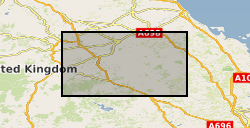
The data set consists of rock samples collected from Coquetdale, Coldstream and Whitrope Burn from 2013-2014; milled material is included. There is an Excel spreadsheet of sample numbers with location, sample height on log, d13C data and %C. There are scans of field logs from Coquetdale, Coldstream and Whitrope Burn, and Illustrator drawn logs from Coldstream which include samples collected at a later date. Scans of thin sections are also included. (thin sections to be kept at Leicester for the time being – still being worked on for papers.) Each locality folder has an Excel spreadsheet detailing samples, sample height, %C and bulk and specific d13C values. These data were used to interpret the environment in which early tetrapods have been found in the early Carboniferous. These data supported the MPhil thesis 'In an alternating marine and non-marine depositional setting, where and how are early Carboniferous tetrapods preserved?' by Sherwin, 2018, and one publication including data from Whitrope Burn - Richards et al., 2018, (https://doi.org/10.1017/S1755691018000166).
-
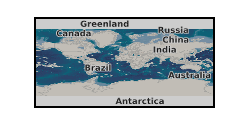
Publications linked to the Grant: Holwell DA, Keays RR, McDonald I and Williams MR. 2015. Extreme Enrichment of Se, Te, PGE and Au in Cu sulfide microdroplets: evidence from LA-ICP-MS analysis of sulfides in the Skaergaard Intrusion, East Greenland Contribution to Mineralogy and Petrology. doi: 10.1007/s00410-015-1203-y. 2) Smith JW, Holwell DA, McDonald I, Boyce AJ. 2016. The application of S isotopes and S/Se ratios in determining ore-forming processes of Magmatic Ni-Cu-PGE sulfide deposits: a cautionary case study from the northern Bushveld Complex Ore Geology Reviews, 73, 148–174 10.1016/j.oregeorev.2015.10.022. Jenkin GRT, Al-Bassam AZM, Harris, RC, Abbott, AP, Smith DJ, Holwell DA, Chapman RJ and Stanley CJ. 2015. The application of Deep Eutectic Solvent Ionic liquids for environmentally friendly dissolution and recovery of precious metals. Minerals Engineering, doi: 10.1016/j.mineng.2015.09.026. Hughes, H. S.R., McDonald, I., Faithfull, J. W., Upton, B. G..J., and Loocke, M. (2016) Cobalt and precious metals in sulphides of Peridotite Xenoliths and inferences concerning their distribution according to geodynamic environment: a case study from the Scottish lithospheric mantle. Lithos, 240-3, pp. 202-227. doi:10.1016/j.lithos.2015.11.007. Abbott, A.P., Harris, R.C., Holyoak, F., Frisch, G., Hartley, J. and Jenkin, G.R., 2015. Electrocatalytic recovery of elements from complex mixtures using Deep Eutectic solvents. Green Chemistry, 17(4), pp.2172-2179. DOI: 10.1039/C4GC02246G
-
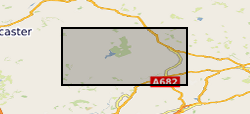
The data were produced by Joe Emmings, NERC-funded PhD student at the University of Leicester and British Geological Survey, between 2014 and 2017. Authors of these data: Joe Emmings a, b; Sarah Davies a; Christopher Vane b; Melanie Leng b, c; Vicky Moss-Hayes b; Michael Stephenson b a School of Geography, Geology and the Environment, University of Leicester, University Road, Leicester, LE1 7RH, UK. b British Geological Survey, Keyworth, Nottingham, NG12 5GG, UK. c School of Biosciences, Centre for Environmental Geochemistry, University of Nottingham, Sutton Bonington Campus, Leicestershire LE12 5RD, UK. Data include: 1) A range of photographs from the outcrop Hind Clough and boreholes MHD4 and Cominco S9, sample photographs, thin section scans, microphotographs (transmitted light and scanning electron microscopy) and hand specimen descriptions; 2) The results of 100 analyses from the outcrop Hind Clough and boreholes MHD4 and Cominco S9; x-ray fluorescence major and trace element concentrations, RockEval pyrolysis measurements, x-ray diffraction traces and LECO elemental C and S data. These data were interpreted together with 20 drill-core samples previously acquired from Hind Clough ('HC01' prefix). See http://dx.doi.org/10.5285/c39a32b2-1a30-4426-8389-2fae21ec60ad for further information regarding this drill-core dataset. Acknowledgements: This study was funded by NERC grant NE/L002493/1, a part of the Central England Training Alliance (CENTA). This study also received CASE funding from the BGS. Nick Riley (Carboniferous Ltd) is thanked for sharing his expertise, particularly regarding the field identification of marine faunas. Charlotte Watts is thanked for providing field assistance. Nick Marsh, Tom Knott and Cheryl Haidon are thanked for providing expertise and assistance during inorganic geochemical and mineralogical analyses.
-

These data accompany a manuscript, titled: Stream and Slope Weathering Effects on Organic-rich Mudstone Geochemistry and Implications for Hydrocarbon Source Rock Assessment: A Bowland Shale Case Study All files with prefix 'Man_1' relate to this submission. The manuscript was submitted to the journal Chemical Geology in December 2016. Data include: 1) A range of photographs from the outcrop, drill cores, sub-samples, 'weathering grades' and thin section microphotographs from the Bowland Shale; 2) The results of mineralogical (whole rock powder x-ray diffraction; XRD) analyses for 18 subsamples; 3) The results of inorganic geochemical analyses (LECO elemental C and S, x-ray fluorescence major and trace elements) for 18 subsamples; 4) The results of organic geochemical analyses (Rock-Eval pyrolysis, d13Corg) for 20 subsamples; 5) RStudio scripts used to conduct statistical analyses (e.g., Principal Components Analysis) and generation of figures.
-
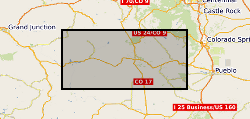
Whole rock and microanalytical geochemistry data from rocks collected from the Colorado Mineral Belt, Thirtynine Mile volcanic area, Cripple Creek gold deposit (& environs) and other volcanic and intrusive bodies of the Pikes PEak - Gunnison area of Colorado.
-
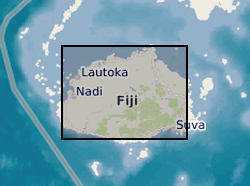
Whole rock and microanalytical geochemistry data from rocks collected from the Colorado Mineral Belt, Thirtynine Mile volcanic area, Cripple Creek gold deposit (& environs) and other volcanic and intrusive bodies of the Pikes PEak - Gunnison area of Colorado
-
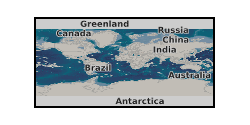
Whole rock and pyrite geochemistry data from a suite of mineralised and barren rocks from Vatukoula gold mines and the Tavua caldera that hosts the ore body, in the northern part of the island of Viti Levu, Fiji. Vatukoula (also historically known as the Emperor gold mines) is a world class alkaline-associated epithermal gold deposit, noted for the abundance of gold and silver telluride minerals, and the exotic geochemistry of the volcanic host rocks (potassic shoshonites and absarokites). This dataset includes bulk geochemical analysis of whole rocks by X-ray fluorescence, and microanalysis of major and trace element of pyrite in the ore by a combination of electron beam and laser-ablation ICP-MS techniques. Pyrite geochemistry can be a useful tool in the study of epithermal ores, as it can carry evidence of boiling and phase separation, condensation, and fluid mixing. Samples were collected and analysed as part of a larger study looking at the relationship between epithermal gold deposits hosted in alkaline magmatic rocks, and an association with tellurium enrichment and precious metal tellurides. Samples were collected by D J Smith, M Keith, V V Ene, and geologists of Vatukoula Gold Mines. Analysis was carried out by M Keith and F Börner. Collected as part of the Tellurium and Selenium Cycling and Supply (TeaSe) project, part of NERC's Security of Supply of Minerals programme.
-
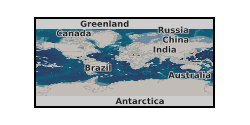
This dataset contains raw experimental high temperature and acoustic emission testing data on ‘Comiso’ limestone samples as outlined in "Castagna, A., Ougier-Simonin, A., Benson, P. M., Browning, J., Walker, R. J., Fazio, M., & Vinciguerra, S. (2018). Thermal damage and pore pressure effects of the Brittle-Ductile transition in Comiso limestone. Journal of Geophysical Research: Solid Earth, 123(9), 7644-7660.s, http://dx.doi.org/10.1029/2017JB015105". The data is provided in a .zip folder for 2 experiments that are accompanied by a README file for introduction. Files format are Microsoft Excel Worksheet (.xlsx) and data are tabulated. Each file contains the corresponding relevant sample’s details and each column of data is clearly labelled, units included. For each experiment, local time, corrected time, temperature (in degrees Celsius), acoustic emission amplitude (in decibels) and counts were recorded. Cylindrical samples of ‘Comiso’ limestone samples (Ragusa Formation; Sicily) were heat-treated to investigate the effects of thermal stressing on the limestone’s microstructure. In all tests, a controlled heating rate of 1 °C/minute was applied, keeping the specimen at the desired maximum temperature for 30 minutes to allow complete temperature equilibration followed by natural cooling (generally less than<1 °C/minute). The experiments were conducted on the Carbolite CTF12/75/700 tube furnace of the Rock and Ice Physics Laboratory of the University College of London between the 22nd and 28th February, 2016. The experiment were conducted by Drs A. Castagna and J. Browning, both responsible for the collection and interpretation of the data.
 BGS Data Catalogue
BGS Data Catalogue